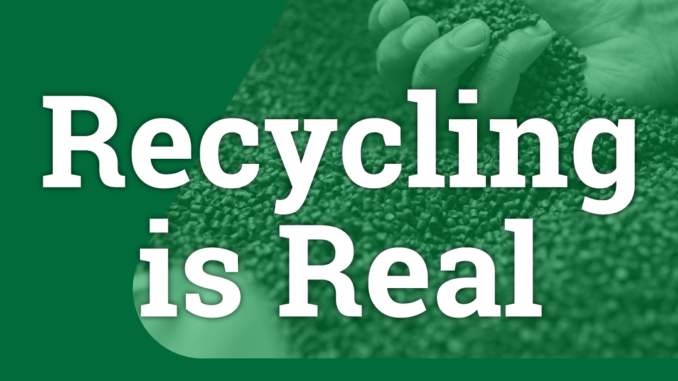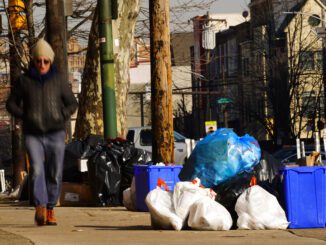
Recycling continues to be the center of environmental conversations these days, especially as we look to reach our shared sustainability goals, increase recycling rates and reduce plastic waste. Unfortunately, there are still some who claim that plastic recycling will ‘never work,’ and continue to create roadblocks to meeting important sustainability objectives — namely increased recycling rates.
In just the past few years, the plastics industry that we are proud to represent, has announced over $8 billion dollars in investments into new technologies, facilities, and innovations that will make recycling that much more of a reality. In those same few years, we have seen a dramatic shift in the messaging coming from anti-plastic activist organizations who are more interested in perpetuating a problem rather than solving one. They say things like “plastic recycling is a myth.” They block compromise legislation. They even tell people not to bother recycling. That is not environmentalism, and it is why the industry has launched a campaign to say three small words in a big way.
Recycling is real. Tens of thousands of Americans go to work every day making it happen and that is exactly what this new initiative, Recycling Is Real, can show you. We have traveled across America and filmed ordinary people doing extraordinary things, including right here in North Carolina. We show that it is possible for that bottle you used today, or even the bumper on your car from years past, to stay in our economy and out of the environment, giving it another life, sometimes more than once.
For most, “recyclable” defines whether something can be put into a blue or green bin. But the truth is, that’s only the first step in a process that turns a used product into material that can be made into yet another product.
Recycling is Real highlights the industry’s commitment to recycling by showing who these folks really are and that their role in the circular economy is not fictional or imaginary. From shredding the old material to extruding the new material or creating the equipment that makes it possible to design safe new ways to put more recycled content into products, the people in these videos invite the viewer to come and see what they do, showing us that it’s truly undeniable that recycling is both feasible and economical. Moving forward, this campaign will continue to share examples of recycling success stories.
Naysayers from the anti-recycling groups are likely to say, “If recycling is real, then why are some recycling rates still so low?” That is a fair question and one that can be easily answered. Infrastructure for recycling simply has not kept up with the incredible innovations in products and materials over the past few decades. These include innovations that provide value in other ways like reducing food waste, enhancing safety, and minimizing the material used to make a product.
We must invest in recycling infrastructure and, as an industry, we understand that we have a role to play in helping to fund that infrastructure. It’s why we support well-constructed extended producer responsibility programs, which place a small fee on products the plastics industry manufactures, especially in packaging. It’s also why the plastics industry supports attainable minimum recycled content requirements that establish guaranteed end-markets for material and in turn, spur private investment. But manufacturers and recyclers cannot increase rates on their own. We need partners ― lawmakers who share our commitment to sustainability and solutions; brand owners dedicated to the use of recycled content in products and packaging, and retail establishments who want to make it as easy as possible to place that used product in the blue bin. And yes, consumers must be at the heart of this effort by finding that bin and knowing what goes where.
I would encourage you to listen to the words of the workers, including those right here in North Carolina, who proudly show recycling is far from a “myth.” It’s happening every day and once we agree on the reality of recycling and put an end to false narratives, we can work together to get recycling rates where we all want them to be.
Recycling is Real — see for yourself.
Matt Seaholm is President and CEO of the Plastics Industry Association

